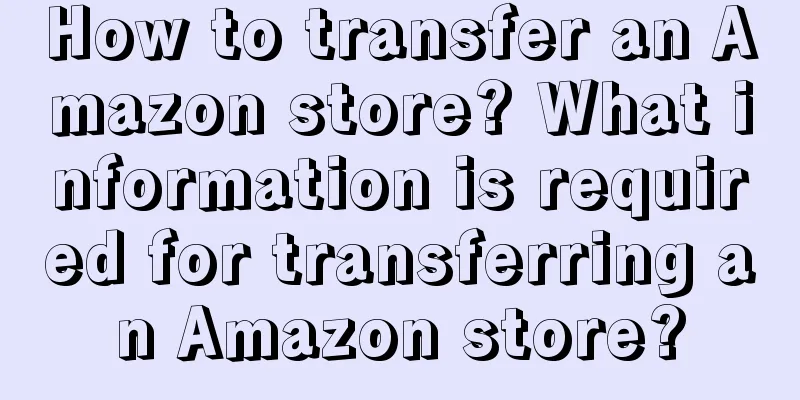How to transfer an Amazon store? What information is required for transferring an Amazon store?

|
In some cases, sellers may need to transfer their Amazon stores for various reasons. This article will explore the issue of how to transfer Amazon stores from multiple perspectives to help sellers better understand the process. 1. Amazon store transfer situation: Sellers may consider transferring their Amazon stores for personal reasons, business strategy adjustments, or other reasons. In this case, the correct transfer process can ensure the rights and interests of sellers and buyers. 2. Steps for transferring Amazon stores: Find a suitable buyer: The seller first needs to find a suitable buyer, which can be found through online platforms or relationship networks. Determine the transfer conditions: The seller and buyer need to negotiate and determine the transfer conditions, including the price of the store, delivery method, post-transfer services, etc. Back up important data: Before transferring a store, the seller should back up all important store-related data to ensure that no important information is lost due to the transfer. Notify Amazon: Sellers need to submit a transfer application to Amazon, which should include relevant information of the seller and buyer as well as specific details of the transfer. Amazon review: Once the transfer application is submitted, Amazon will review it to ensure that the application complies with regulations and is legal. Buyer information verification: Buyers need to provide relevant information for verification to ensure that their identity is legal and they have the ability to continue operating the store. Complete the transfer: Once the review is passed and the buyer's information is successfully verified, the seller can transfer the management rights of the store to the buyer to complete the transfer process. 3. Information required for Amazon store transfer: Store information: Sellers need to provide basic store information, including store name, registered country, store link, etc. Transaction details: The seller and buyer need to provide the transaction details of the transfer, including the transfer price, payment method, delivery method, etc. Seller information: The seller needs to provide his or her contact information, name, identity proof and other information. Buyer information: Buyers need to provide their contact information, name, identity proof, business plan and other information. |
>>: Is it easy to do cross-border e-commerce without a source of goods? How to do it?
Recommend
There is no ceiling for those who understand brand operation
This article focuses on brand operations and share...
Magical gesture dance, the most popular short video imitation sample in 2022!
Starting from gesture dance, this article objectiv...
Is it illegal to transfer an Amazon store? What should I do if I want to transfer a store?
Not every merchant on Amazon has a booming busines...
Is Sora an opportunity or a challenge for domestic manufacturers?
At the beginning of this year, OpenAI generated a ...
2025, e-commerce ushered in a "new balance"
2024 is a challenging year for e-commerce merchant...
What does Shopee sub-account mean? What is its use?
Shopee platform will launch some new services and ...
After ordinary people make money, remember these 6 points!
In this article, the author shares six things that...
Private domain traffic operation, how to build personal IP? The key is these 5 steps
The author divides the private domain traffic oper...
Shopee has stopped accepting orders after placing a few orders. What is the reason?
Many friends have chosen cross-border e-commerce a...
Don’t let sales ruin the brand you worked so hard to build!
In the journey of brand building, short-term sales...
What are the channels that Amazon often uses to select products? What is Amazon FBA?
Product selection is a crucial step in successfull...
Do I have to pay tax on my income from opening a shop on Shopee? What should I pay attention to?
More and more merchants are opening stores on the ...
Is it difficult to convert existing users into new ones at low cost?
In the stock era, when traffic is scarce, is it di...
How to check product rankings on Amazon? How to improve rankings on Amazon?
Nowadays, there are more and more merchants openin...
Birkenstocks are popular again. Why have ugly clothes and ugly shoes become a new trend?
This article explores how "ugly clothes"...









